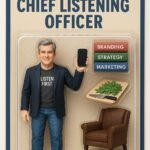This is a guest post by Amanda Winstead, a writer focusing on many topics including technology, web design elements, and digital marketing. If you want to follow her writing journey, or even just say hi you can find her on Twitter.
Your goal as a business owner is to reach the maximum number of potential customers with as little effort as possible and a simple message. Focus on these 3 web design elements to get the most value from your work.
Those marketing achievements are within reach when you opt for a sleek, efficient web design to enhance your marketing strategy. With this simple, three-pronged approach, you can elevate your web design to the next level through an improved user experience, as well as sustainability and accessibility features.
#1 – User Experience
To design the best website possible, you must put yourself in the customer’s shoes and empathize with what they are feeling and experiencing. They probably landed on your website because they have a job to be done.
Your customers’ mindsets are complicated and liable to change instantly depending on their individual needs, behaviors, the information they have access to, and more. By gathering data related to visitors’ scrolling patterns, clicks, and items added to the cart, you can gauge interest to design your user interface accordingly.
Prioritizing the customer experience is key to achieving higher engagement on your site. One way to do so is through user experience (UX) design, which “is the process of making a product or service useful and engaging for users or customers.” UX careers range from visual design artists to UX engineers who create a visually appealing, functional website design. It’s also essential to analyze the UX of any third-party platforms that play a role in your company’s marketing strategy to ensure there are no UX design hiccups.
Your website design should also align with your company’s brand persona, message, and values, and you should concentrate most of your design efforts on the all-important homepage — these are just a couple of critical website elements you shouldn’t leave out.
#2 – Sustainability
In an increasingly environmentally conscious world, sustainable web design aims to minimize your company’s carbon footprint from the very start. Businesses are responsible for most greenhouse gas emissions worldwide, and in recent years consumers have been gravitating toward eco-friendly companies to avoid supporting big polluters.
On their end, businesses boasting a sustainable model reap the benefits of profits, money saved, and a cleaner public opinion. When customers see that you align with their values, they’re more likely to give you their business. Eco-proofing your website design doesn’t have to be complicated.
By removing unnecessary ads or pop-ups and launching fast-loading mobile pages, you can streamline the user experience, making sustainable website design a win-win.
When internet users interact with an online video, news article, or web page, a data transfer delivers information from the website’s server. One study estimates the internet’s total carbon footprint at approximately 830 tons of CO2 dumped annually into the atmosphere each year. Larger websites, lightning-fast load times, and high pixel counts may entertain visitors but compromise sustainability efforts.
Other ways to promote sustainability include trading in used devices and to make use of energy-efficient lighting in your brick-and-mortar office spaces.
#3 – Accessibility
As a rule of thumb, a complex website in the average person’s eyes is even more challenging to navigate for the individual with a disability. Accessibility is one of the ways brand equity is measured, along with things like awareness and relevant differentiation.
An accessible website usually boasts:
- A clear visual hierarchy.
- A legible color contrasts.
- Alt-text and Accessible Rich Internet Applications (ARIA) labels.
- Simple copywriting.
- We designed focus states.
- No flashing animations.
- Consistent navigational elements.
Sixty-one million adults, or 26% of Americans, live with some disability, ranging from visual impairment to limited physical mobility. You don’t want to risk alienating this large subset of customers because of poor website accessibility.
Conclusion
Half the battle of owning a business is reaching your intended demographic, and intentional website design can help you do just that. Could you keep it simple? Don’t overstuff too many messages into your communications. Blogs, newsletters, and FAQs are a great place to put more complex stories.
Whether you’re marketing a product or a service, a top-notch website design can increase your site’s chances of ranking high on Internet search engines and raking in a high volume of web traffic.
Accessibility, sustainability, and UX work together to create the customer experience, and you want to nail all three to secure the highest return on your investment.
This is a guest post by Amanda Winstead, a Zillenial who can’t be reached via cable ads. Amanda is a writer focusing on many topics including technology and digital marketing. Along with writing she enjoys traveling, reading, working out, and going to concerts. If you want to follow her writing journey, or even just say hi you can find her on Twitter.
You can set up a time to chat with me about your marketing challenges using my calendar. Email me jeffslater@themarketingsage.com Call me. 919 720 0995. The conversation is free, and we can explore if working together makes sense. Watch a short video about working with me.






